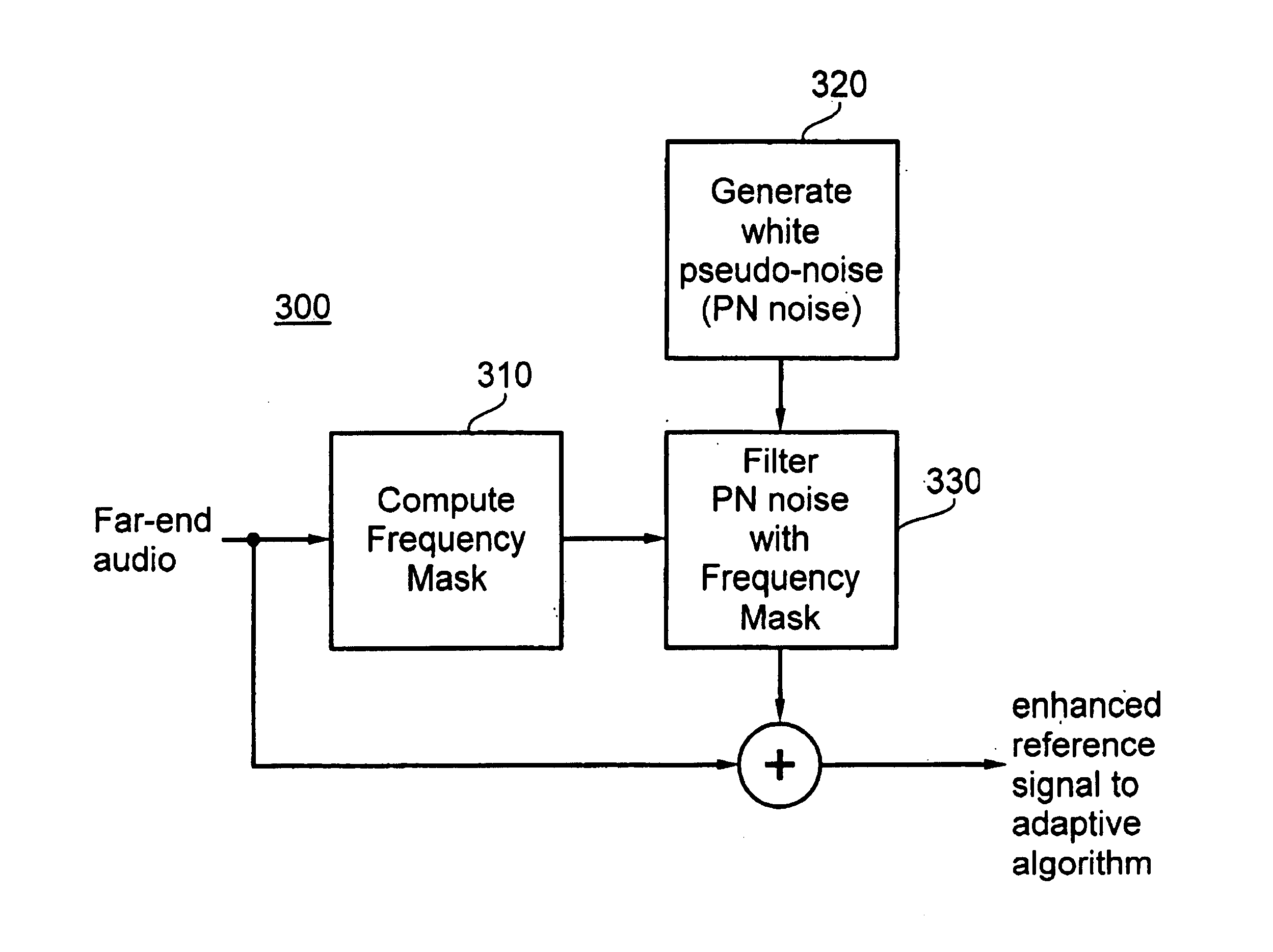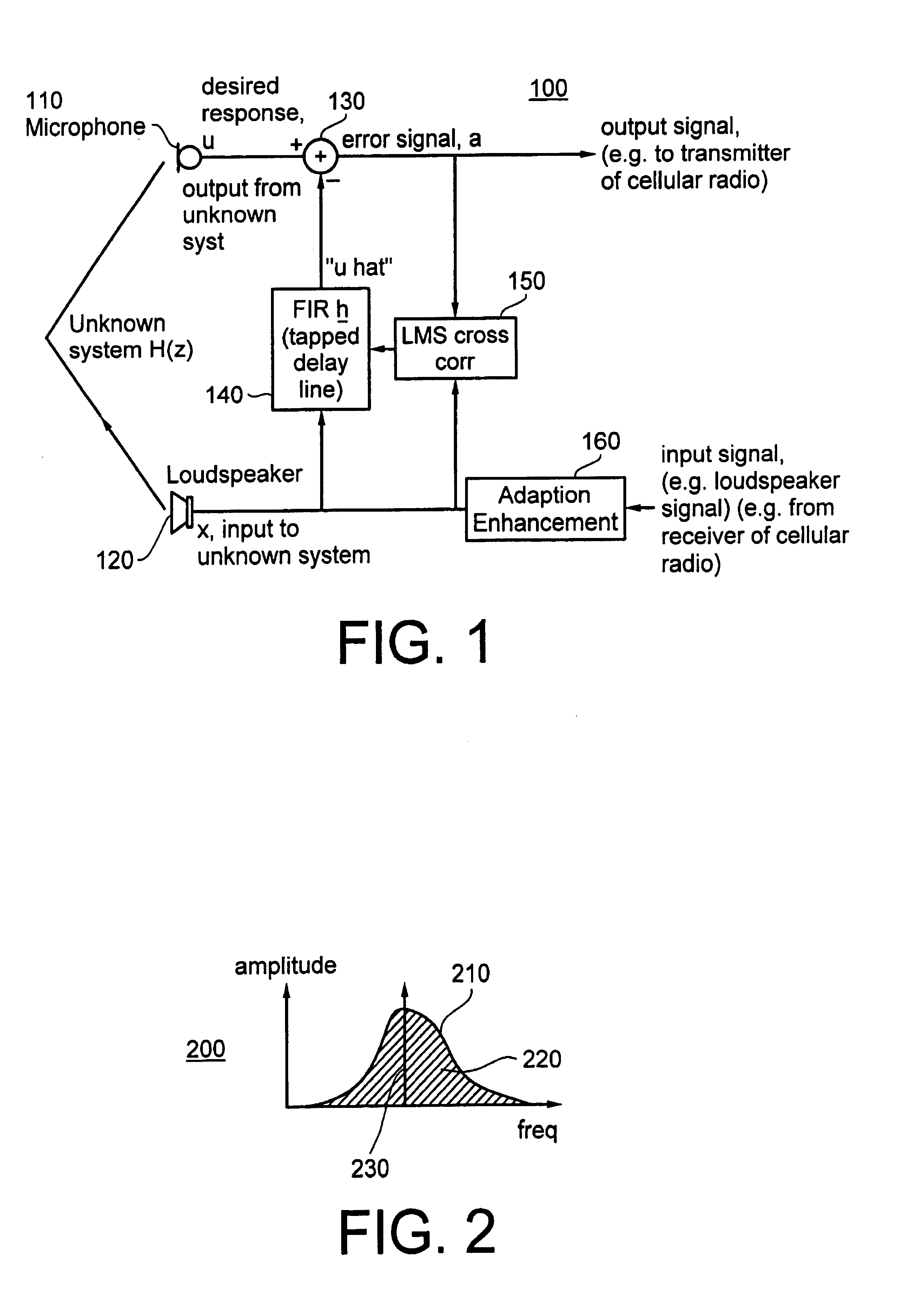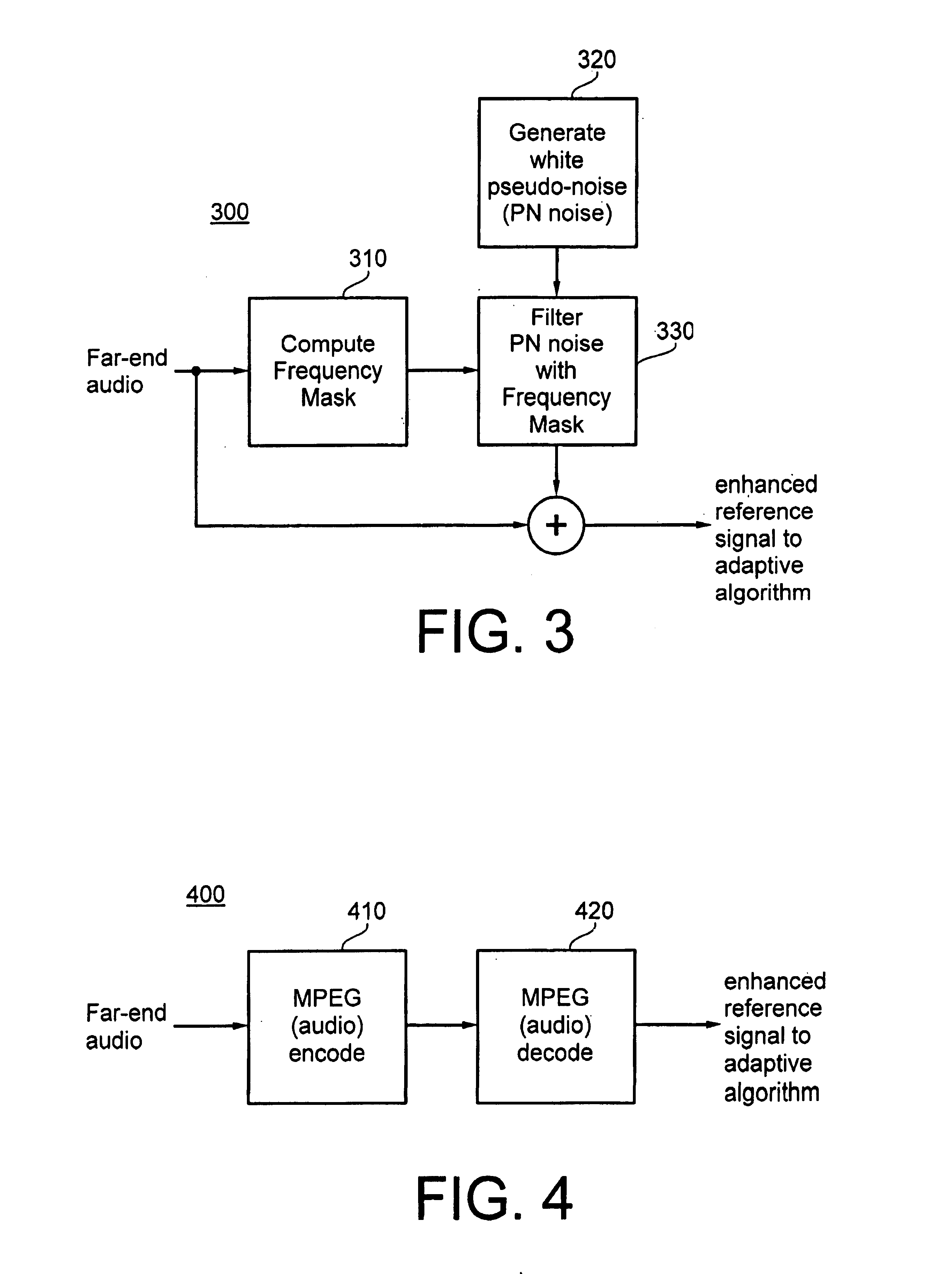Methods and apparatus for improving adaptive filter performance by inclusion of inaudible information
a technology of adaptive filtering and inaudible information, applied in the field of communication systems, can solve the problems of slow lms adaptation process, slow decay of auto-correlation properties, etc., and achieve the effect of improving the convergence speed of a conventional adaptive algorithm, enhancing or optimizing training signals, and convergent faster
- Summary
- Abstract
- Description
- Claims
- Application Information
AI Technical Summary
Benefits of technology
Problems solved by technology
Method used
Image
Examples
Embodiment Construction
[0015]FIG. 1 depicts an exemplary hands-free telephony system 100 incorporating adaptation-enhancement techniques according to the invention. As shown, the exemplary system 100 includes a microphone 110, a loudspeaker 120, a summing device 130, a Finite Impulse Response (FIR) filter 140, a Least Mean Square (LMS) cross correlator 150 and an adaptation-enhancement processor 160. Those of skill in the art will appreciate that the below described functionality of the components depicted in FIG. 1 can be implemented using known digital signal processing hardware and / or a general purpose digital computer. Those of skill in the art will also appreciate that, in practice, the exemplary system 100 includes components (e.g., an analog-to-digital converter at the output of the microphone 110 and a digital-to-analog converter at the input to the loudspeaker 120) which are omitted from FIG. 1, as they are not critical to an understanding of the present invention.
[0016]In operation, a far-end au...
PUM
 Login to View More
Login to View More Abstract
Description
Claims
Application Information
 Login to View More
Login to View More - R&D
- Intellectual Property
- Life Sciences
- Materials
- Tech Scout
- Unparalleled Data Quality
- Higher Quality Content
- 60% Fewer Hallucinations
Browse by: Latest US Patents, China's latest patents, Technical Efficacy Thesaurus, Application Domain, Technology Topic, Popular Technical Reports.
© 2025 PatSnap. All rights reserved.Legal|Privacy policy|Modern Slavery Act Transparency Statement|Sitemap|About US| Contact US: help@patsnap.com



